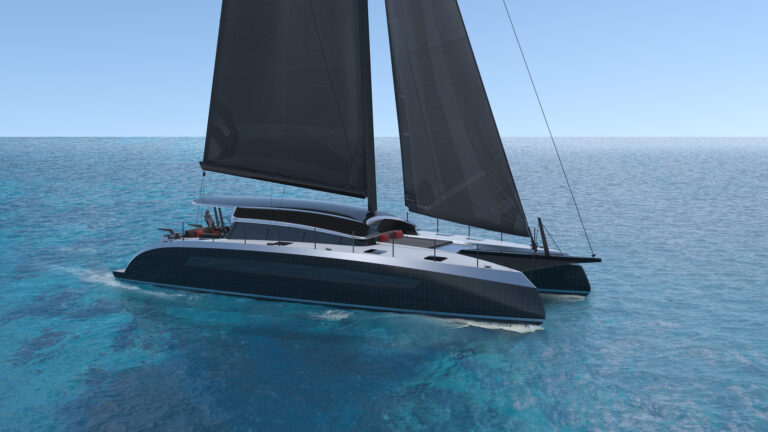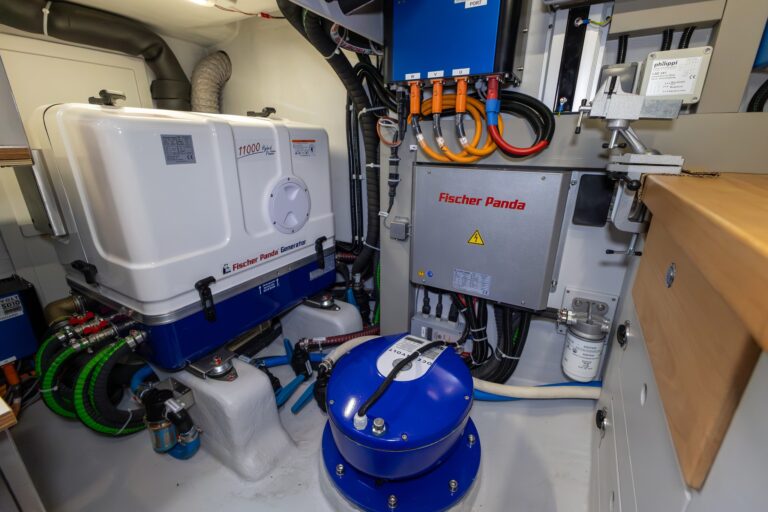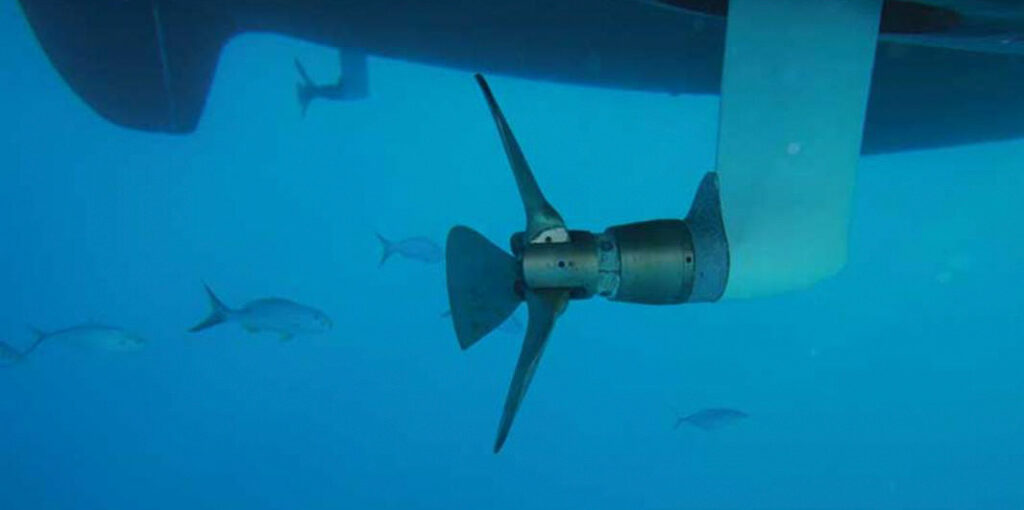
Whitepaper: Hydrogeneration
Using an electric motor for a boat’s auxiliary propulsion has become popular as the need for more environmentally acceptable power increases. A great advantage of using an electric motor is that it can work as a generator by harnessing energy from the ‘free-wheeling’ propeller when sailing. The electric motor becomes a generator, which charges the propulsion battery bank and in turn supplies power to the systems and services aboard the boat.
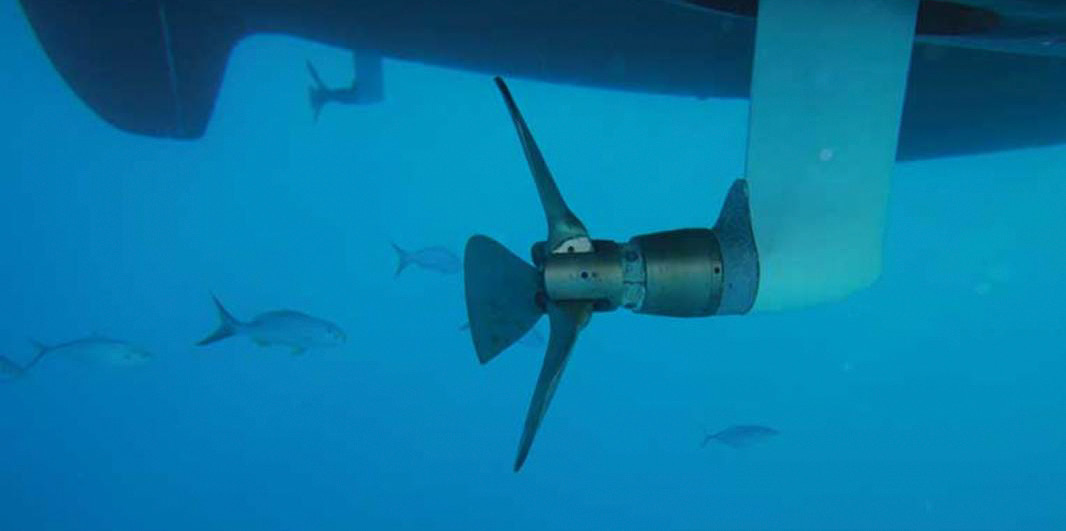
Imagine if you could always sail in silence and hear just the sound of the sea with no need to turn on the generator. The hydrogeneration or “creating energy while sailing” function is an automatic feature in all Oceanvolt motors.
The hydrogeneration feature is activated by pushing the button on the Oceanvolt displays for 5 seconds. The display will automatically switch to regeneration mode showing the current generated power, RPM and time until the batteries are fully charged.
With a normal folding propeller the motor kicks the blades out and centrifugal force combined with the motor controller keeps the blades open. The motor controllers tune the system actively which prevents the blades from closing (too much braking would close the propellers). This is continuous monitoring, the system will adjust the propeller RPM depending on the boat speed.
The patented Oceanvolt ServoProp variable pitch sail drive combines a high efficiency sail drive with the most powerful hydrogenerator on the market. The unique feature of the ServoProp is the possibility to turn the propeller blades 360 degrees. The software controlled variable pitch sail drive adjusts the pitch of the propeller blades automatically so that the power generation and power output are optimal. Combined with uniquely designed blades it delivers optimal efficiency when hydrogenerating but also when going forward and reverse. And with the blades set to the neutral sailing position, the propeller creates extremely low drag similar to the drag of a feathering propeller.
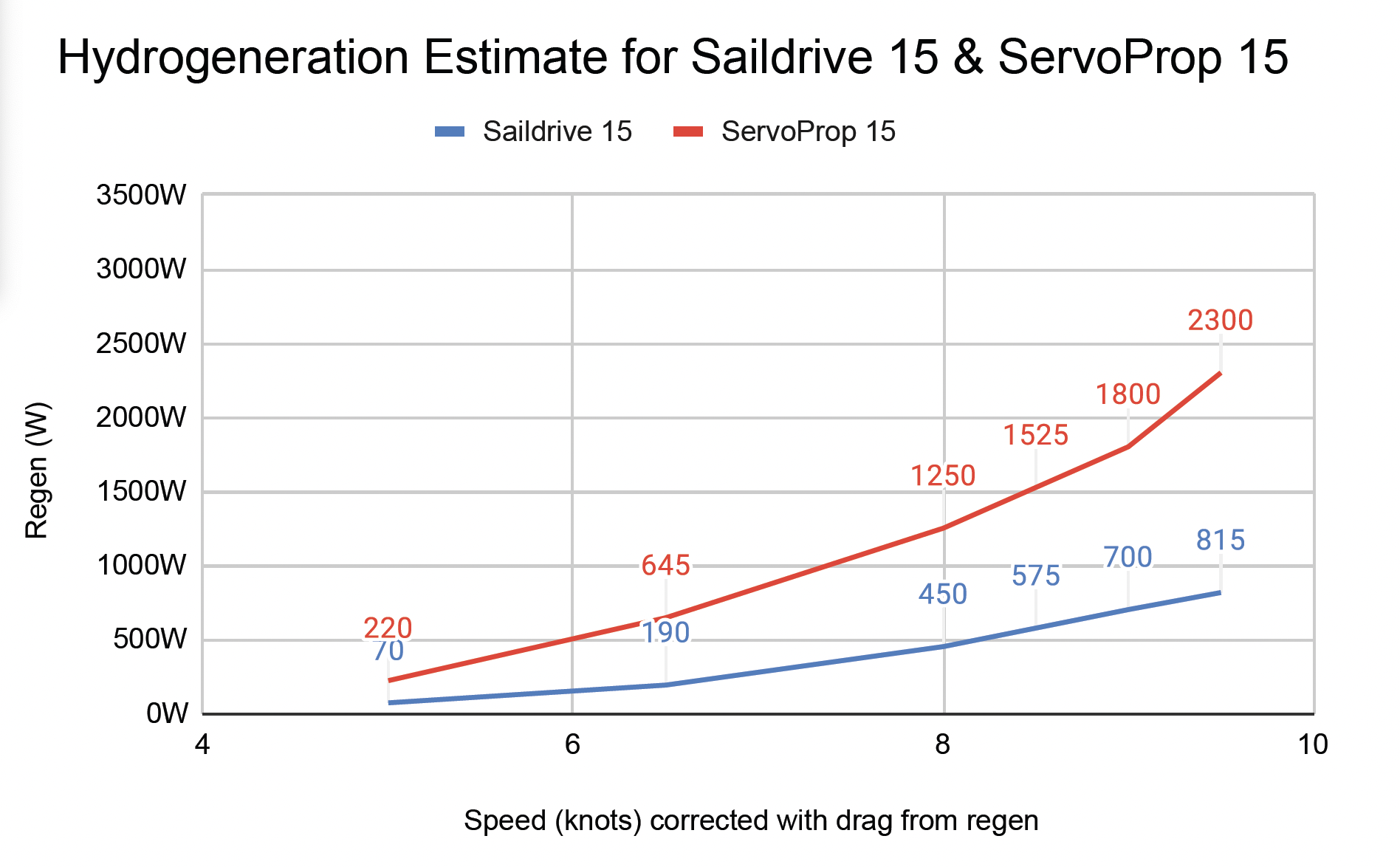
A normal fixed propeller (that by nature does not have the blades ideally shaped for hydrogeneration) generates more power than a folding propeller but less than half the power of a ServoProp at a given boat speed. The ServoProp is capable of generating more than 1 kW at 7-8 knots & 3 kW at 11-12 knots.
The system shuts itself down when the battery is fully charged or if boat speed is too low for efficient hydro generation.
The hydrogeneration allowed by Oceanvolt systems has the potential to be the largest supplier of power to a self-sustaining vessel. With a maximum regenerative capacity of 5kW per drive, a fast sailing vessel can rely on this power the same way regenerative braking in electric and hybrid cars extend the range far beyond the batteries. Additionally, a sailboat is the perfect machine for this technology because the wind powered sailing can extend the range to infinity and also supply house and service power needs while underway through hydrogeneration.
One thing a sailor has to understand is that the sea state and wind conditions are not always optimal for hydrogeneration. Hydrogeneration works best when sailing upwind at TWA 60-90. If the boat is in choppy seas with 3-5 m waves or there is hardly any wind it is impossible to generate energy steadily. So the hydrogenerating capabilities of an electric boat might differ from estimates made in perfect sailing conditions. Because hydrogeneration is a direct product of boat speed, trimming sails and sailing well is rewarded by creating more power.
The regeneration feature is extremely suitable for catamarans because twin motors means double the energy generation. Catamarans are also faster, which means that regeneration power capture is higher. Recently also monohulls have been equipped with twin motor installation, doubling their hydrogeneration capability.
The power generated can be used to power both the propulsion system as well as all the electronics on board without the need to have a separate generator. With this in mind we can definitely start talking about the possibility of a totally self-sufficient cruiser!
